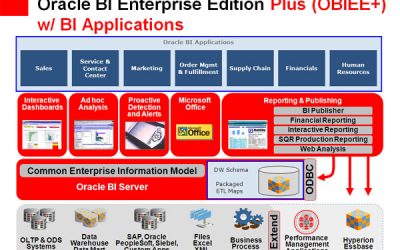Despite the rocketing popularity of business intelligence and its proven significant ROI, nearly one third of companies think the cost is still prohibitive. However, in an article on Yurbi, 5000fish takes on the sensitive subject of just what exactly are the costs of that bells-and-whistles-BI? Six factors must be kept in mind with regards to operational and set-up costs of BI.
 Cost of Software: This is an obvious one but remember that it is all too often just the tip of the iceberg. Remember that price doesn’t always equate to value; flexible pricing is important so services can be scaled as your company grows.
Cost of Software: This is an obvious one but remember that it is all too often just the tip of the iceberg. Remember that price doesn’t always equate to value; flexible pricing is important so services can be scaled as your company grows.
Cost of Deployment: Many companies spend much more than budgeted for on deployment of their new BI system. In many cases the vendor, or an approved partner, must install the system and this can be costly. Even if your in-house IT does it remember the need to cost for a few days taking them away from their day-jobs.
Cost of Traditional Project Management Life Cycle: The majority of vendors inevitably follow the traditional route: requirements, installation, implementation, testing and development. By using the right BI tool for your needs the sum required for project management life cycle can be kept in check.
Cost of End User Training: As with the cost of deployment, costs associated with training are almost always overestimated. Choose a system that is (relatively) intuitive and with a wealth of self-service tools and the cost of user training can drop significantly.
Cost of Administration: The people cost of administration of your new BI system can devastate the ROI. Traditional BI systems aren’t always very well integrated, they are notoriously challenging to administer and many weeks of formal training can be needed. This becomes a prohibitive cost – though entirely necessary.
Cost of Operations and Maintenance: Budgeting for this accurately can quickly become impossible. If a solution required a member of IT or an outside consultant to build and change reports, adjust security settings, or other administrative tasks then costs can quickly rocket – especially since you cannot always predict every change or additional report that might be required. A system with a good change management process is a good start to reducing uncertainty in this area.
All of the above needs to be taken into account when choosing a system. As mentioned at the beginning, the price of the software is often just the tip of the iceberg and costs can quickly mount if the project is not considered and managed carefully.
Big Data and related technologies – from data warehousing to analytics and business intelligence (BI) – are transforming the business world. Big Data is not simply big: Gartner defines it as “high-volume, high-velocity and high-variety information assets.” Managing these assets to generate the fourth “V” – value – is a challenge. Many excellent solutions are on the market, but they must be matched to specific needs. At GRT Corporation our focus is on providing value to the business customer.
Oracle Looks at BI Trends
Mobile is taking over the Business Intelligence (BI) world. So is the cloud. And Big Data, especially "unstructured"...



